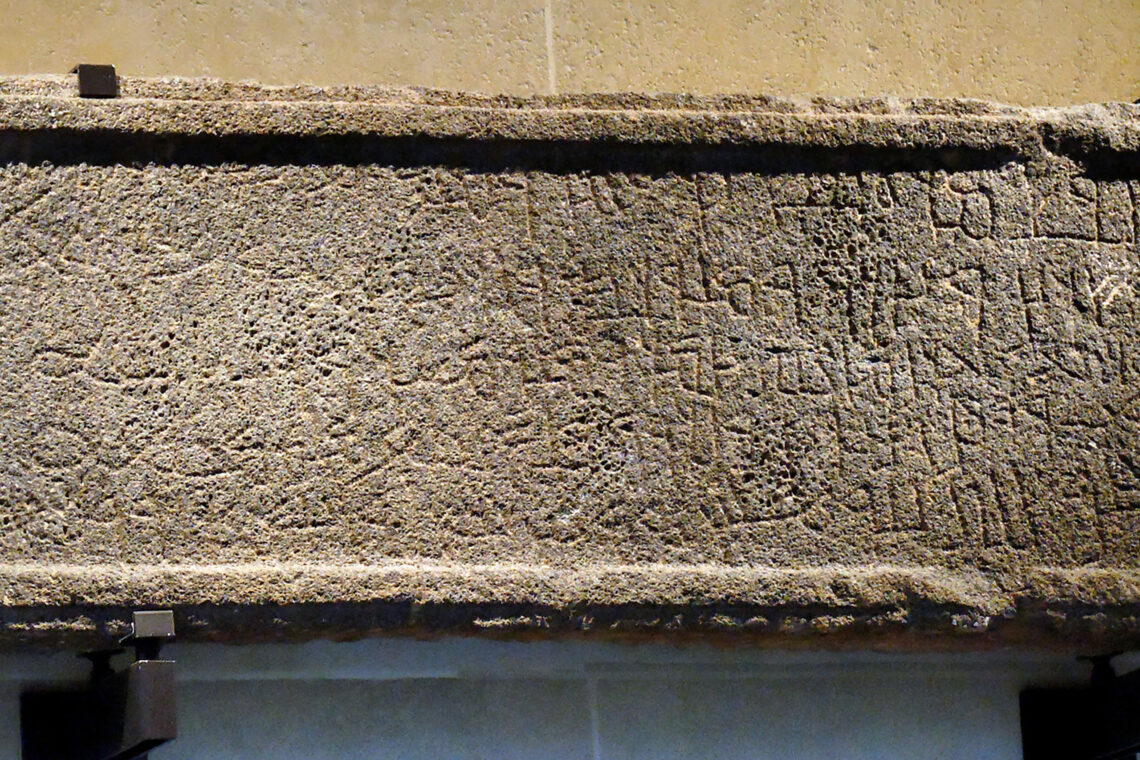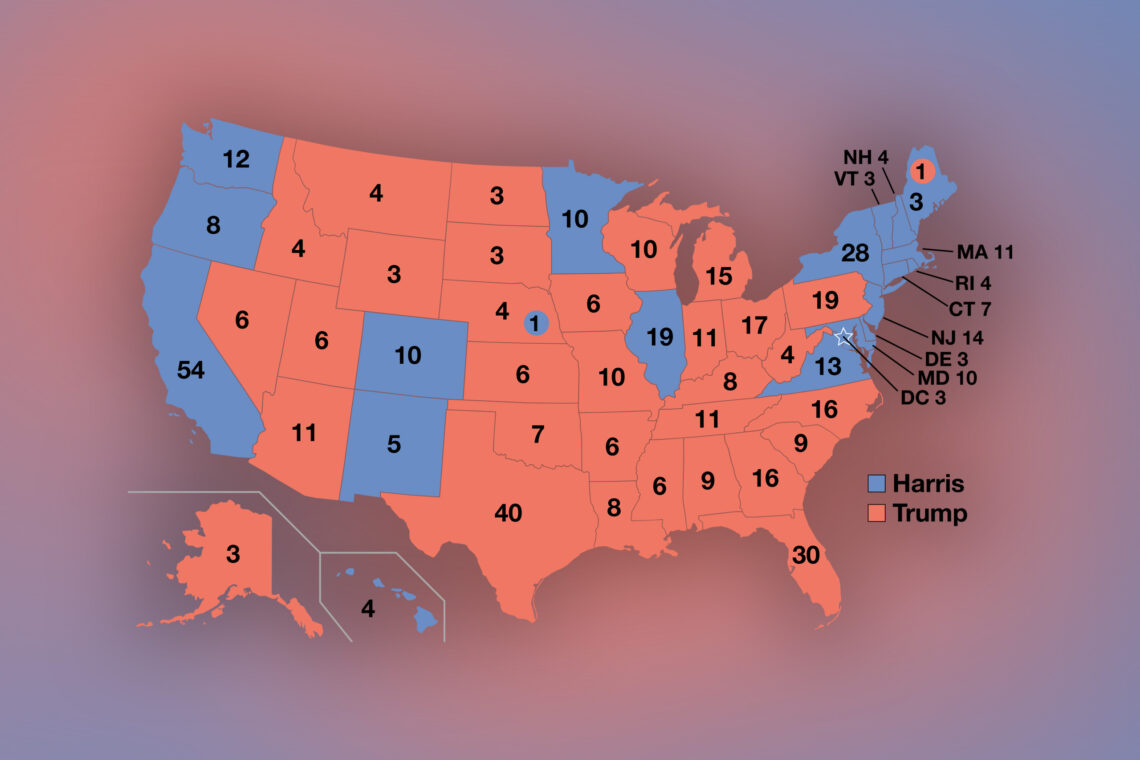In “Koran Redux (1),” I noted how the work of John Wansborough made it clear that the Koran doesn’t make sense without the exegetical literature (Tafsir and Hadith) that developed in 9th-century Iraq. Without such literary aids, much of the Koran wouldn’t make sense at all. Many of the old biblical stories, such as the one about Joseph (Yusuf), but several others as well, would be incomplete without prior knowledge of the Bible, where such stories are more fully elaborated.
Structurally, the Koran, with its very long and excessively short suras (a Syriac term best translated here as chapters), seems to have no logic at all. The titles of these suras were added after the Koran was collected, and some are practically unrelated to the topics discussed, assuming that the chapters themselves have any semblance of thematic unity to begin with. What unites the Koran, the late Alfred-Louis de Prémare tells us in his Aux Origines du Coran (2005), is its frequent rhetorical refrains, rhyming, and recurrence of “doctrinal themes.” Moreover, the Koran—a word derived from the Syriac qeryan—is meant to be recited in a communal setting, giving it more of a liturgical function that is otherwise suspected.
Through 9th-century chronicles known as Akhbar we learn that what is known to us as mus’haf `Uthman—`Uthman’s codex—the book collected by the third caliph not long after the presumed death of the Prophet Mohammed in 632, is, in fact, the result of a centuries-long process during which other codices (masahif) were circulated before they were proscribed by the Umayyad caliph Abd al-Malik in 695, when he addressed the people of Medina, following the end of the second civil war (fitna). Such a statement didn’t do away with the seven variations in reading, which the 10th-century expert Ibn Mujahid, who made the codex of Uthman official, kept.
The emergence of the Koran as a “holy” book, Alfred-Louis de Prémare explains in Les fondations de l’islam (2002), is, therefore, a “far more complex” affair than the conventional belief that it appeared sui generis in the Hijaz, the copy of a tablet preserved in heaven (lawhun mahfud). The story actually raises more questions than it answers. For example, the first two caliphs after Mohammed (Abu Bakr and Omar ibn al-Khattab) are credited with ordering the collection of the Koran (jam` al-qur’an), but no one seems to wonder about what exactly was to be collected. Leaves (suhuf) are frequently mentioned, but so are the “bellies of men” (memories), as Mohammed’s secretary, Zayd ibn Thabit, reportedly put it. The latter, when ordered by Abu Bakr to write down the Koran, asked the caliph if he would do what the Prophet Mohammed himself hadn’t done. In other words, Mohammed had no intention whatsoever to create a book out of his mission. In fact, according to the independent Palestinian man of letters, William Al-Sharif, Al-Bukhari reported that Abu Bakr himself, when asked by Omar ibn al-Khattab, recoiled from having to write down the Koran after Mohammed’s death: “How can you do something which Allah’s Apostle did not do?” was his reply.
Neither Abu Bakr nor Omar (who turned the Ka`ba into the Muslim site for pilgrimage and said that he was behind a few revelations, such as the one regarding the stoning of adulterers) had the time to collect the Koran, so it fell on Uthman, a member of the Umayyad clan, to gather the leaves kept by Hafsa (Omar’s daughter and Mohammed’s widow), compile the Koran into one mushaf (codex), and destroy other versions. According to one Muslim account, Uthman had been urged to do so by a Jewish convert to Islam, the general Hudhayfa who led the conquest of Armenia in 645-646. Hudhayfa had heard his troops recite different versions during his expeditions and worried that Muslims might suffer from the same discord that afflicted the Jews and Christians.
Following the assassination of Uthman (ironically, one of the grievances against him was that he imposed his own version of the Koran, somewhat like what the Roman Emperor Constantine did at the Council of Nicea), the Umayyad governor of Medina, Marwan ibn al-Hakam, asked for Hafsa’s leaves, but she refused to hand them to him. It was only after her death in 665 that her brother Abdellah ibn Omar gave them to the governor, who promptly destroyed them to avoid any confusion in the future.
We have other accounts. According to Ibn Abi-Dawud, Ubaydallah ibn Ziyad, the grandson of Abu Sufyan and governor of Iraq who led his army against Hussain, the son of Ali, in Kerbala in 680, charged his secretary Yazid the Persian to add “2000 harf,” or 2000 letters, to the mushaf.
There are more stories, but existing evidence tends to indicate that it was Abd al-Malik, with the help of governors like Al-Hajjaj ibn Yussef (d. 714) who is responsible for the collection of the Koran, although, as we saw, that initiative is credited to his distant Umayyad relative, Uthman. Multiple sources have reported Abd al-Malik saying that it was during the month of Ramadan that he collected the Koran. The short sura titled al ikhlas (loyalty), about the oneness and unity of Allah, was finalized during his reign. Previous versions of the same sura had been scattered here and there, mostly without the imperative or declarative (qul) or “Say!” It was also during the reign of Abd al-Malik, following the defeat of his rival Abdellah ibn al-Zubayr in Medina, that an attempt was made to turn the Dome of the Rock in Jerusalem into a site for pilgrimage. Finally, it was during the same reign of Abd al-Malik that Arabic became the official language of the state, a new Islamic currency was minted, and the status of the dhimmis (non-Muslim People of the Book) was made official.
That the Koran was assembled (jumi`a) has been attested and is clear from its style and narrative coherence. Alba Fedeli, writing in The Hidden Origins of Islam, edited by Karl-Heinz Ohlig and Gerd-R. Puin, has shown that the 10th-century Muslim scholar Ibn al-Nadim reported seeing several different Koranic manuscripts, none of them in agreement. Four people, Alfred-Louis de Prémare tells us, played a major role in the process of elaborating the Koran—Ubayy ibn Ka`b, Zayd ibn Thabit, Abdellah ibn Mas`ud, and Abu Musa al-Ash`ari. Each produced his own mushaf (codex), sometimes without the Preamble or al-Fatiha (as in the case of Abdellah ibn Mas`ud), and the last two suras (al-mu`awwidatan). Abdellah ibn Mas`ud, in fact, was furious when Uthman imposed his own version. Some of these masahif were read well into the 10th century.
Ubayy ibn Ka`b and Zayd ibn Thabit were both versed in Hebrew, having studied in Jewish schools. Some even accused Ubayy ibn Ka`b to have been a rabbi before Islam. He is said to have transcribed the revelation as it descended on Mohammed, making him a kind of co-author, if not the main author, since the Koran, including the first sura of Iqra’, echoes older Biblical and Jewish verses almost verbatim.
In any case, the Koran, like the Hadith, was mostly assembled and edited by non-Arab Muslims, known as mawali, who were deeply aware of their surrounding Jewish, Christian and other religious traditions, and wanted to create a new identity with its own mythology based in the pristine desert and cultural environment of the Hijaz in present-day Saudi Arabia. The cultured mawali not only played such a decisive role in the making of Islam, but they were also the ones who developed the golden age of science. One could almost claim that the Arabs of the Arabian Peninsula had nothing to do with the rise of Islam and its great legacy. It is not surprising that the great Arab historian Ibn Khladun found it rather strange that most of the keepers of science in Islam were `ajam, or non-Arabs.
The Koran takes much pride in being revealed in Arabic, yet it is rife with foreign words—the name of the book itself—Koran—is, as we have seen, of Syriac origin. Early in the 20th century, the scholar Arthur Jeffery, a professor of Semitic languages, author of The Foreign Vocabulary of the Qur’ān, was able to sum up in a remarkably succinct fashion–still unsurpassed today, in my estimation–the language problem that haunts Koranic studies. Jeffery’s chronology of composition seems dated in light of more recent scholarship, but his linguistic approach could strengthen the notion that the Koran could only have been composed in a cosmopolitan milieu, not in Mecca or Medina.
The text of the Koran—the first Arabic book—is more of a reflection of the great monotheistic traditions of Christianity and Judaism than it is of pagan Arabia because most of the religious and cultural vocabulary of the Koran is of non-Arabic origin. For example, confusion surrounded the identity of the Sabians (who are among the People of the Book, known in Arabic as the zabur), like the Jews with their tawrat, and the Christians with their injil, let alone numerous other words of minor significance. Eventually, there developed an ideology of the Arabness of the Koran to support the verses stating so. Arabic was declared the most perfect of languages; it was even beyond the power of average mortals to comprehend. Only a prophet, according to Ashafi` could fully comprehend it. In fact, older languages, such as Abyssinian, Nabataean, Syriac and Persian, were said to have borrowed from Arabic. This was linguistic chauvinism taken to the extreme, even though the Koran tells us that prophets speak in the languages of their own people.
Later scholars, such Assuyuti and al-Tha`labi, reached for a compromise and acknowledged the borrowing, but they also (rightly so) added that Arabized words don’t make the Arabic language any less Arabic. Assuyuti, in fact, claimed that the Arabic language borrowed from a whole list of languages, including Ethiopic (lisan al-habasha), Persian (allugha al-farisiya), Greek (allugha arrumiya), Indian (allugha alhindiya), Syriac (allugha assirianiya), Hebrew (allugha al’`ibraniya), Nabataean (allugha annabatiya), Coptic (allugha alqubtiya), Turkish (allugha atturkiya), Negro (allugha azinjiya) and Berber (allugha al-barbariya). Jeffery was not sure what Indian refers to. Coptic and Turkish, on the other hand, were practically non-existent, while attributions to Negro and Berber languages were for effect only.
Abyssinian influences, on the other hand, are well known. The Arab Lakhmids in Hira spread Pahlavi (the official language of the Sasanian Empire) influence and it is in Hira that Arabic writing—including the Kufic script using Syriac—was most likely invented. Byzantine Greek spread in Arab regions by the Arab Ghassanids and Greek words were transmitted into the Koran through Syriac—the language of the common people, the Nestorians, Jacobites, or Monophysites—as opposed to Greek, the language of high culture. The Jews also had a major influence, as evidenced in the polemics one finds against them in the Koran, although the latter borrows from Aramaic, not Hebrew. When Muslims refer to Nabataean what they actually mean is Aramaic.
This is yet another glimpse into the complex and still largely unexamined history of the making of a book whose holiness has more to do with religio-political struggles for supremacy during the Umayyad and Abbasid periods than with any supernatural phenomena. The text that was crafted out of this very long and complicated process gradually turned into a holy artifact, preserved in a heavenly tablet, even though the Koran, as William Al-Sharif noted in Rethinking Quranic Studies, is written in seven letters (sab`at ahruf) and allows for seven slight variations in reading. It was further decreed that such a book can only be touched by those who are clean (al-mutaharrin) and that all recitation of its verses to conclude with “God Almighty is Right” or “sadaqa allahu al-adhim,” an unequivocal statement that leaves no room whatsoever for any disagreement.
Thus, the holiness conferred on the Koran has insured the perpetual tyranny of the late-antique and early medieval Arab ideology on Muslims living in the post-modern world of the 21st century.




Concerning the truth about the so-called “Arabic” language – a truth that humanity is still not aware of, that was discovered by a handful of linguists and scientists in the late 18th Century: First off, The Prophet of Islam – Prophet Ahmad, was not an Arab. The Holy Quran explicitly explain in AQ 03:33 Indeed, ALLAH chose Adam and Noah and the family of Abraham and the family of ‘Imran over the worlds. Two families were chosen and those who were chosen from these two families as Messengers were the Prophets. As mentioned in AQ 06: 83 – 89 And We gave to Abraham, Isaac and Jacob – all [of them] We guided. And Noah, We guided before; and among his descendants, David and Solomon and Job and Joseph and Moses and Aaron. Thus do We reward the doers of good. And Zechariah and John and Jesus and Elias – and all were of the righteous. And Ishmael and Elisha and Jonah and Lot – and all [of them] We preferred over the worlds. And among their fathers and their descendants and their brothers and We chose them and We guided them to a straight path. That is the guidance of ALLAH by which He guides , whomever of His servants who wills. And if they associated others with Allah , then worthless for them would be whatever they were doing. These are the peoples to whom We gave the Book and authority and Prophethood. If disbelievers by those (of their people), then We entrusted it to a people who are not therein disbelievers. You will read from the above verses and these are 16 prophets who were born to the families of Abraham and Amran. Further from the AQ 19:58 Those were the peoples, I, Allah bestowed grace on them of the Prophets, from the offspring of Adam, and from those whom We carried (in the ship) with Nuh, that is, offspring of Abrahim and Israel, and from those whom We guided and chose. When the verses of the Most Gracious were recited unto them, they fell down prostrate and weeping. Again explicit explanation with regards to the prophets. You will also notice that those who were on the ship with Noah were the descendants of Prophet Abraham and Israel and not their ancestors. These confirm that Prophet Abraham lived before the flood. Further from the Holy Quran 29:27 27. And We bestowed on him (Abraham), Ishaq and Ya`qub, and We ordained among his offspring Prophethood and the Book, and We granted him his reward in this world; and verily, in the Hereafter he is indeed among the righteous. The above verse reflects on the family of Abraham and that the prophetline from the family of Abraham goes through Prophet Ishaq. Since Prophet Ahmad was a Prophet, thus confirms his prophethood and that the descendents of Prophet Ishaq were never Arabs. As such, Prophet Ahmad was not an Arab and the language of the Holy Quran was never written in Arabic! It was written in the Lingua Franca of the Middle East – Aramaic. Second, the term “arabic” (transliteration: 3arabi) is not a proper name of a language. So when the Quran says “lisan arabi” it actually says “lisan Aramiy which means: “the eloquent tongue”. This means that there were other tongues spoken in Arabia that were NOT eloquent, but were actually perverted dialects. The Quran calls them “Ajami” (transliteration: “a3jami”), which comes from “3jm”, which means: “missing something / improper/lacking/ weak/ something that makes enormous effort to be eloquent but fails to do so, outlandish”. Syriac, Old Yemeni, Greco-Roman, Persian and others are all nothing but “a3jami” dialects derived from the Mother Tongue (which we call “Aramaic”). These dialects are missing some letters. For example, Syriac has 22 letters, while the Mother Tongue has 28. But the similarities between all these dialects are staggering. Linguists are begin now to realize that ALL these dialects in fact had one, older origin – Aramaic – the language of Prophet Abraham. The eloquent tongue (lissan 3ramiy) of the Quran is the most ancient tongue on the planet. Yes, “Aramaic” is a description (not the proper name) of the primordial and “fitri” tongue of mankind. ALL the inhabitants of Arabia, whether they spoke Syriac, Old Yemeni, or other “3ajami” dialects could understand the Holy Quran, because “3ramiy” (the eloquent speech) is the Mother and Prototype of all. GOD chose this eloquent prototype as the vehicle not only for HIS final Book but HIS first Book, [which comprises of the section (zabur – an Aramaic word) – Torah, to humanity. As for the Injeel, it was written in a dialect of the South Yemeni.